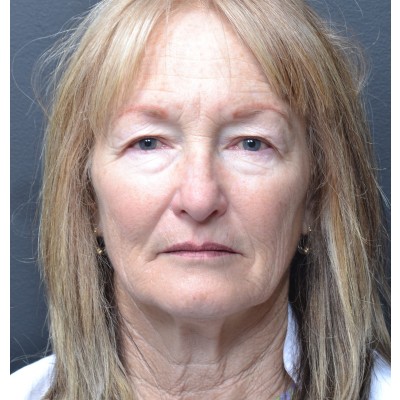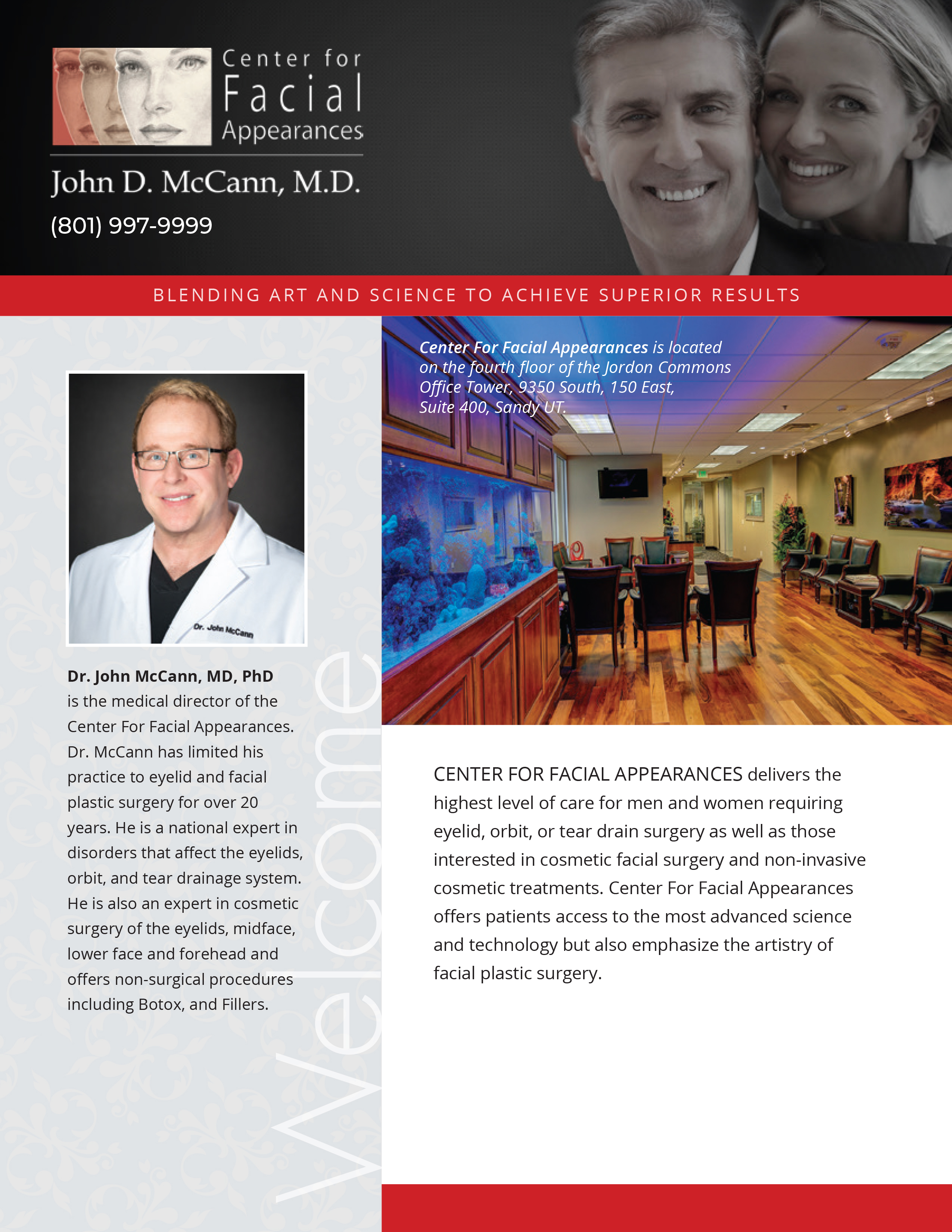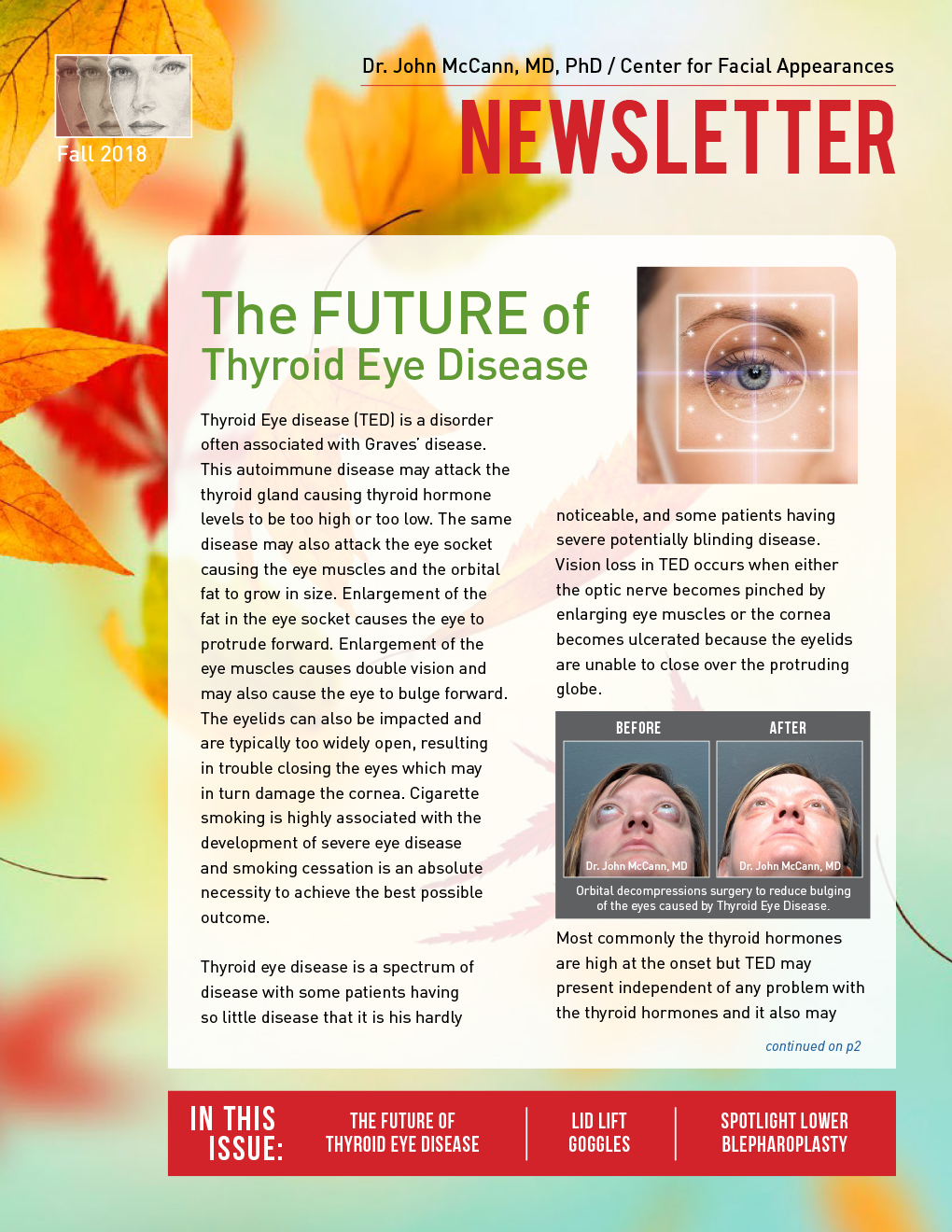MidFace, Face Lift, and Neck Lifts in Utah
How do you know which type of facelift surgery in Sandy you need to consider?
Midface Lifts
Have you noted that with the passage of time you are developing sagging cheeks? Is your facial appearance sadder than you feel? Do others think you look tired when you are not? Are you developing dark circles under your eyes or a deepening of the fold beneath the corners of your nose?
If the answer to any of these questions is “yes” then Dr. John McCann from the Center for Facial Appearances can help.
Dr. McCann has developed techniques to use invisible incisions inside the eyelids to elevate the sagging cheeks, giving a more youthful, happier, less tired appearance. Midface Lifting surgery is often done in conjunction with cosmetic eyelid surgery.
Face Lift
Have you noticed that your jawline which was once round or triangular is taken on a square shape? Are you developing jowls making you look older?
Ultherapy is a no-recovery, non-surgical method approved by the FDA to tighten the skin of the face. It will not produce results as dramatic as surgery, but for patients who have a mild problem or for those who need some more tightening years after a prior face lift surgery, it can be the right choice.
If you have a fairly thin face, a small incision Face Lift can elevate the jowls and reverse the early changes of aging of the lower portion of the face and neck. Many thin face patients have loss of facial volume and can benefit from transferring fat from where it not needed, such as the belly, to restore facial volume.
Some patients have an excess of fat and or skin in the neck that obscures the normal contour of the neck. For these cases, the neck and face can be lifted simultaneously.
Dr. McCann has applied the concepts, which have made him an expert cosmetic eyelid and forehead surgeon, to correcting the aging changes that occur in the lower portion of the face. His innovative techniques place the emphasis on natural post procedure appearances, small incisions, and rapid recovery. The application of these techniques will help patients actually recover from the lower face lift even more rapidly than they recover from cosmetic eyelid surgery.
The facelift surgery in Utah pioneered by Dr. McCann is truly an innovation in rejuvenation of the lower portion of the face. Dr. McCann has great experience with mid face, lower face, and neck lifting procedures having performed thousands of these procedures for both men and women.
Call us or request a consultation today.
Frequently Asked Questions
Why do patients get mid face lift surgery?
The primary reason is to look younger and to have a happier expression on the face. With facial aging there is descent or drooping of the cheeks and mid face. The descent of the cheeks causes one to have a sad expression on the face. Descent of the cheek also contributes to dark circles under the eyes and to deepening of the fold between the cheek and lips (nasolabial fold). Elevation of the cheeks can reduce the dark circles and nasolabial fold as well as give one a more cheerful expression on the face.
Why do patients get mini face lift surgery?
The primary reason is to look younger. With facial aging there is descent of the lower portion of the face. This causes soft tissue to droop below the jaw line (jowls). When we are young the jaw line is round with the soft tissue following the boney contour. Jowl formation changes the jaw line from a round configuration with the skin tightly associated with the bone to a squared configuration with loose tissue hanging below the boney jaw line. A mini face lift surgery can elevates the jowls, and return the lower face to a youthful round contour.
Why does the mid face and lower face droop with the passage of time?
There are several reasons. One reason is that the structures that attach the skin to the boney skull elongate allowing for sagging of the skin. A second reason is loss of elasticity of the skin so that the skin itself sags. A final important reason is loss of volume. Our face looses volume with time and this facilitates wrinkle formation and descent of the face. An analogy is a beach ball. If the ball is fully inflated it will be perfectly round and without wrinkles on the surface. If some of the air is let out of the ball it will no longer be round and it develops wrinkles on the surface.
Aging causes both loss of volume and drooping of the cheeks and lower face. Do I need volume added to the face with injections or surgery to correct the drooping soft tissue?
Many patients benefit from addressing both. We often perform mid face lift surgery, mini face lift surgery, and add volume with fillers during the same procedure. Adding volume with fillers often reduces the amount of surgery that is done and allows the patient to recover more rapidly.
How long is recovery for mid face lift surgery?
Mid face lift surgery is typically performed at the same time as eyelid surgery. Eyelid surgery results in bruising and swelling that often resolves in 3 weeks.
How long is recovery for a mini face lift surgery?
It takes 2-3 weeks for bruising and swelling to resolve. Stitches are removed about two week after the procedure.
Does mini face lift surgery require general anesthesia in a hospital?
No. We often perform the procedure in the office using oral sedation and local anesthesia. Patients are often less anxious in the office than in the operating room and it substantially reduces the cost of the procedure.
When are the stitches removed after face lift surgery?
About two weeks after the procedure.
Does mini face lift surgery effect my hairline?
The surgery technique used at the Center for Facial Appearances has little effect on the sideburns and hairline.
Is it possible to get a face lift without having surgery?
In some patients the primary problem is loss of volume from the face and there is not much sagging or drooping soft tissue. In these cases simply adding volume to the face with fillers can substantially improve the aging changes in the mid face and to a lesser degree the lower face. We now have fillers available that give results for a year and longer. Please see the tab on this website on the use of fillers.
What causes some people to get a bad result from a face lift?
In our opinion, most bad face lift results are caused by removal of too much skin. Removal of too much skin results in an unnatural, pulled back, wind swept appearance. The amount of skin that must be removed to achieve an acceptable improvement in appearances is reduced if volume is added at the same time that the skin is removed. It is particularly important to avoid unnecessary removal of skin from the lower eyelids as this can cause problems with eyelid closure and vision.
Who benefits from neck lift versus a mini face lift?
If jowl formation is the primary concern then the min face lift is our procedure of choice. Some patients have excess skin in the neck as well as jowls. As long as the neck is thin and the amount of skin in the neck is mild to moderate our procedure of choice is still the mini face lift. If someone has a thick heavy neck with much redundant skin in the neck then a neck lift is more beneficial than a mini face lift. A neck lift is sometimes called a full face lift. A neck lift differs from a mini face lift as the incision extends much further behind the ear and the amount of surgery is greater in the neck lift. Most patients have neck lift performed in a surgery center or hospital under general anesthesia. On average the neck lift also takes substantially longer to recover from than a mini face lift.
Can face lift surgery be done at the same time as eyelid surgery or forehead lift surgery?
Yes. Many patients prefer to get all procedures performed at the same time. This allows the patient to go through a single recovery period.
Are their risks associated with face lift surgery?
Yes. All medical procedures have risk associated with them. You should discuss the risk of face lift surgery with your surgeon so that you can make an informed decision.
Related Procedures
Dr. McCann offers additional cosmetic surgery procedures. Learn more about them.









